
Amphipyrinae is a subfamily of owlet moths in the family Noctuidae. There are more than 50 genera and 210 described species in Amphipyrinae, although the classifications are likely to change over time.

Cisthene is a genus of lichen moths in the family Erebidae. The genus was erected by Francis Walker in 1854.
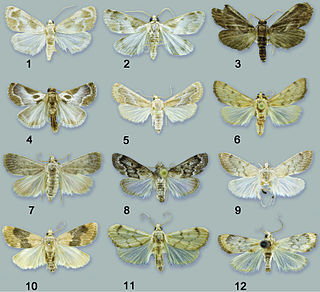
Schacontia is a genus of moths of the family Crambidae described by Harrison Gray Dyar Jr. in 1914.
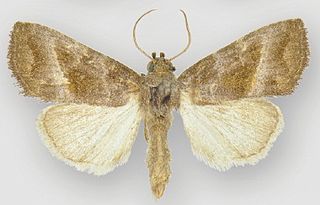
Ogdoconta is a genus of moths of the family Noctuidae.
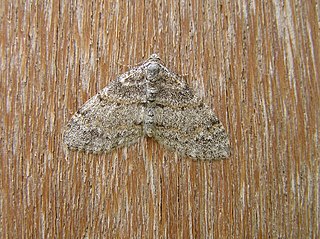
Lobophora is a genus of moths in the family Geometridae erected by John Curtis in 1825.

Apamea vultuosa, the airy apamea, is a moth of the family Noctuidae native to North America.

Sympistis subsimplex is a moth of the family Noctuidae first described by Harrison Gray Dyar Jr. in 1904. It is found in North America, including Arizona.

Heterocampa is a genus of prominent moths in the family Notodontidae. There are about 18 described species in Heterocampa, found in North, Central, and South America.

Harrison Gray Dyar Jr. was an American entomologist. Dyar's Law, a pattern of geometric progression in the growth of insect parts, is named after him. He was also noted for eccentric pursuits which included digging tunnels under his home. He had a complicated personal life and along with his second wife he adopted the Baháʼí Faith.
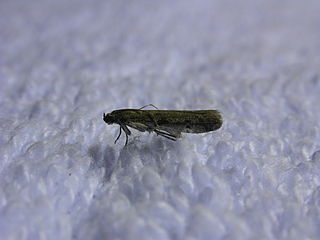
Phycitodes reliquella is a moth of the family Pyralidae described by Harrison Gray Dyar Jr. in 1904. It is known from North America where it is widely distributed in the east, including Alabama, Arkansas, Connecticut, the District of Columbia, Florida, Georgia, Illinois, Louisiana, Massachusetts, Maryland, Maine, North Carolina, New Hampshire, New Jersey, New York, Ohio, Oklahoma, Pennsylvania, South Carolina, Virginia and Ontario.
Caudellia apyrella, the crescent-winged caudellia moth, is a species of snout moth in the genus Caudellia. It was described by Harrison Gray Dyar Jr. in 1904 in honor of his colleague Andrew Nelson Caudell. It is found in North America.
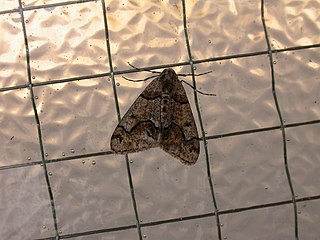
Gabriola dyari, or Dyar's looper, is a moth of the family Geometridae first described by Taylor in 1904. It is found from the Alaskan panhandle and British Columbia to California. The habitat consists of coniferous forests.
Eupithecia casloata is a moth in the family Geometridae first described by Harrison Gray Dyar Jr. in 1904. It is found in North America, including Yukon, British Columbia, Alberta, Saskatchewan, New Brunswick, Newfoundland and Labrador, Quebec, Washington, Montana, Oregon, Wyoming, Colorado, Utah, California, Maine and New Hampshire.
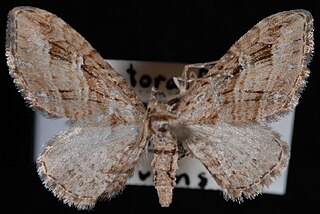
Eupithecia niphadophilata is a moth in the family Geometridae first described by Harrison Gray Dyar Jr. in 1904. It is found in North America from British Columbia and western Alberta south to New Mexico.
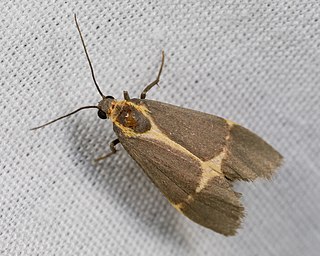
Cisthene barnesii, or Barnes' lichen moth, is a moth of the family Erebidae. It was described by Harrison Gray Dyar Jr. in 1904. It is found in the US Rocky Mountain region, from southern Montana and western North Dakota to the border with Mexico in Arizona and New Mexico. The habitat consists of dry bunchgrass steppe.

Apatelodes pudefacta, the pudefacted apatelodes moth, is a moth in the family Apatelodidae first described by Harrison Gray Dyar Jr. in 1904. It is found in the US state of Arizona and Mexico.
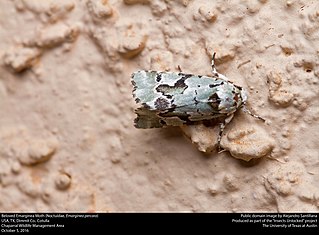
Psaphidini is a tribe of owlet moths in the family Noctuidae. There are at least 40 genera and at least 90 described species in Psaphidini.

Lobophora nivigerata, the powdered bigwing or two-lined aspen looper, is a moth in the family Geometridae. The species was first described by Francis Walker in 1862. It is found in North America.
Lobophora montanata is a species of geometrid moth in the family Geometridae. It is found in North America.

John Bernhardt Smith was an American professor of entomology who specialized in systematics and economic entomology while also serving as the State Entomologist of New Jersey. Smith is remembered in insect taxonomy for the conflict that he had with Harrison Dyar.















